Could dark matter be powering the EMdrive?
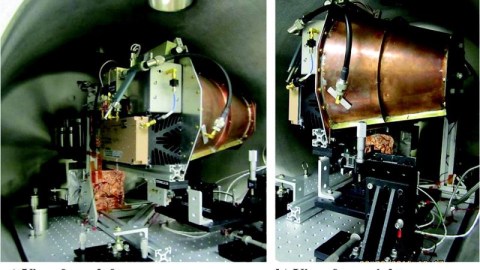
If the impossible space engine works, could dark matter reconcile the laws of physics with these bizarre experimental results?
“…axions are potentially detectable through their weak coupling to electromagnetism…” –Aaron Chou
For every action, there’s an equal and opposite reaction. This formulation of Newton’s third law has two very important modern consequences: one, that there’s a physical quantity that’s always conserved in the Universe (momentum), and two, that the laws of physics are the same irrespective of your position in space. This has a huge slew of implications, including that if you want to power a device to change its motion, you need to push against something. This could be exhaust from a rocket, tires pushing against a road, train wheels on a rail-line or even photons reflected off a sail. The one thing that’s forbidden is a reactionless drive: an action without a reaction. That’s exactly what the EMdrive — the “impossible” space engine just verified by a NASA test — claims to be. If it truly works as advertised, it violates the laws of physics. But there’s a possible loophole: perhaps there is a reaction, and we just don’t detect it. Perhaps the reaction occurs, but it’s occurring due to dark matter.

According to the standard model of cosmology, the majority of the matter in the Universe isn’t in the form of atoms, or of any known particle. Rather, the overwhelming majority of mass — by a 5-to-1 margin — is in the form of dark matter. Dark matter doesn’t collide, annihilate or otherwise interact with either itself or other, normal matter under any known circumstances, but rather interacts only gravitationally. After 13.8 billion years like this, it forms a vast, diffuse cosmic network of gravitational structure, and forms huge spherical haloes more than a million light years in diameter that contain galaxies like our own. This means, all told, that dark matter permeates every square centimeter of our galaxy, including existing — albeit in small densities — inside every object on Earth, including our own bodies.
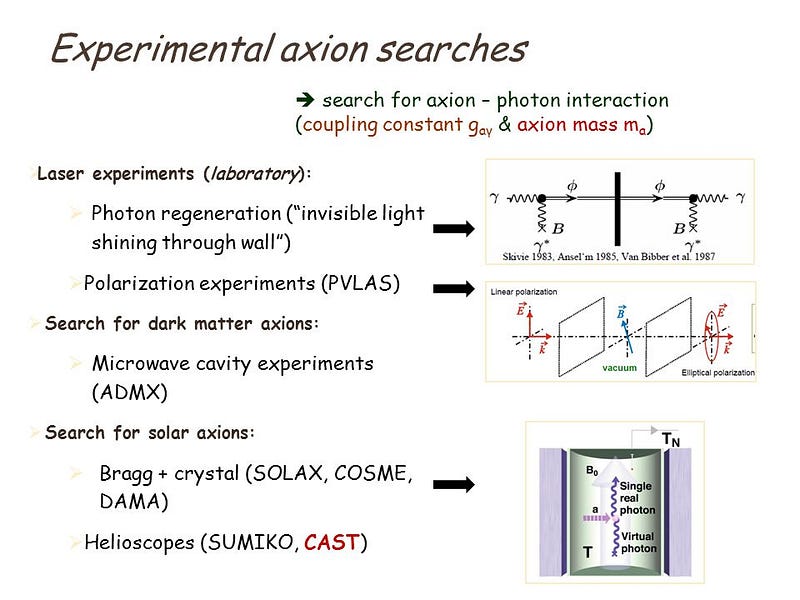
Under the right conditions, however, dark matter can be coaxed to interact with either itself or with normal matter, dependent on its nature. If dark matter is made up of WIMPs (weakly interacting massive particles), then it has an annihilation cross section with itself and a scattering cross section with protons and neutrons that may render it sensitive to detectors. If instead, it’s made up of very light, low-mass particles known as axions, it may couple to photons under the right conditions. One of the experiments designed to search for axions is known as ADMX: the axion dark matter experiment. In 1983, physicist Pierre Sikivie invented the axion haloscope, which takes advantage of the fact that the axion-photon coupling can be amplified, with the right parameters, inside an electromagnetic cavity. Twelve years later, ADMX grew out of that research, and scientists have been searching for the axion ever since using that method.

To date, unfortunately, searches have come up empty. It’s possible that axions do not exist or, if they do, are not the dark matter, but it’s also possible that they simply exist with different parameters than what ADMX is sensitive to. It’s possible that a different electromagnetic cavity, with different properties, would enable interactions with axions. It’s possible that photon-axion interactions could take place, and that a cavity with the right properties could cause photons to scatter off of axions in a preferred direction. It might not seem likely, but it is conceivable that the EMdrive is such a cavity.
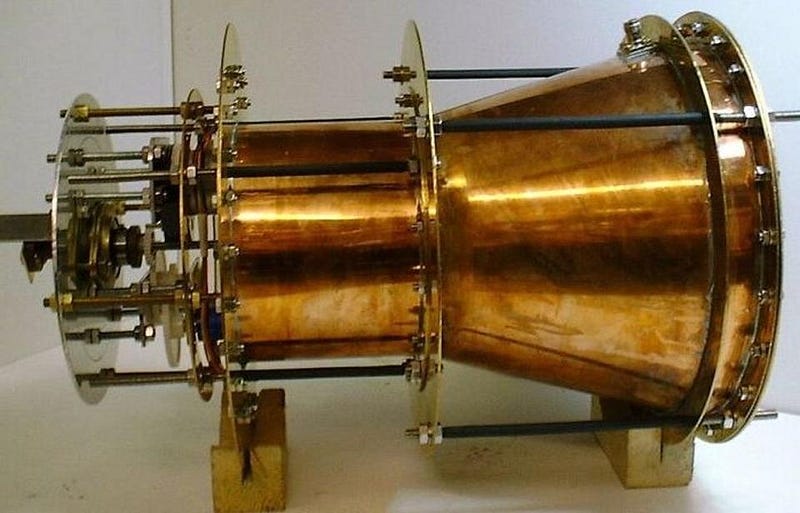
How would it work? At any point in time, there are dark matter particles passing through all regions of space, undeterred by the presence of matter or other Standard Model particles. Inside the electromagnetic cavity, photons of a particular frequency bounce around in all directions, conserving momentum and generating no thrust. But if photons moving in a particular direction — towards the “back” of the cavity, for example — are likely to strike a dark matter particle, three things ensue:
- The photon changes momentum, and moves “less backwards” and “more forwards” than before it struck the dark matter particle.
- The photon strikes the inside wall of the cavity, reflecting off of it and imparting its momentum in the forward direction to the cavity itself.
- The struck dark matter particle gains momentum as well in the opposite direction: backwards.
Momentum is conserved because the dark matter carries it away, equal and opposite in magnitude to what the cavity absorbs.
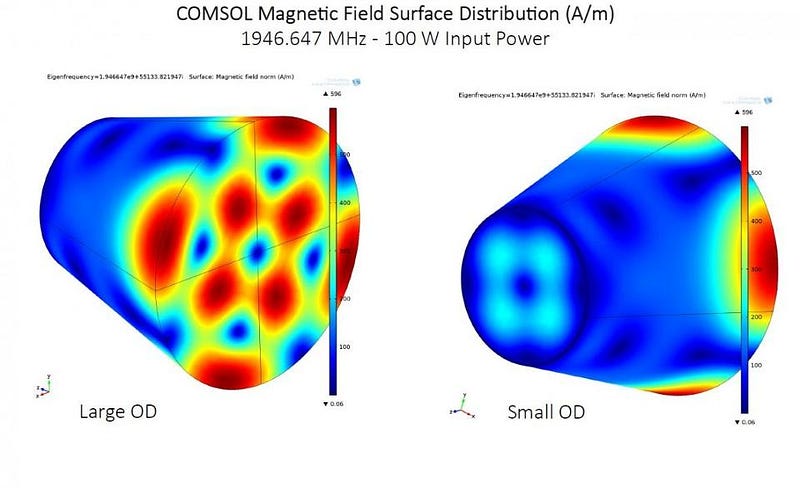
If this is what’s truly going on, it would be revolutionary. Because dark matter is everywhere, it means that we’d only need a power source — not fuel — to travel anywhere in the galaxy we wanted, because every location in the galaxy contains substantial amounts of dark matter. It means that we’ll have a method for detecting dark matter that was stumbled upon accidentally, and that dark matter is verified to exist. And most importantly, it means that the laws of physics aren’t broken after all; momentum is still conserved.
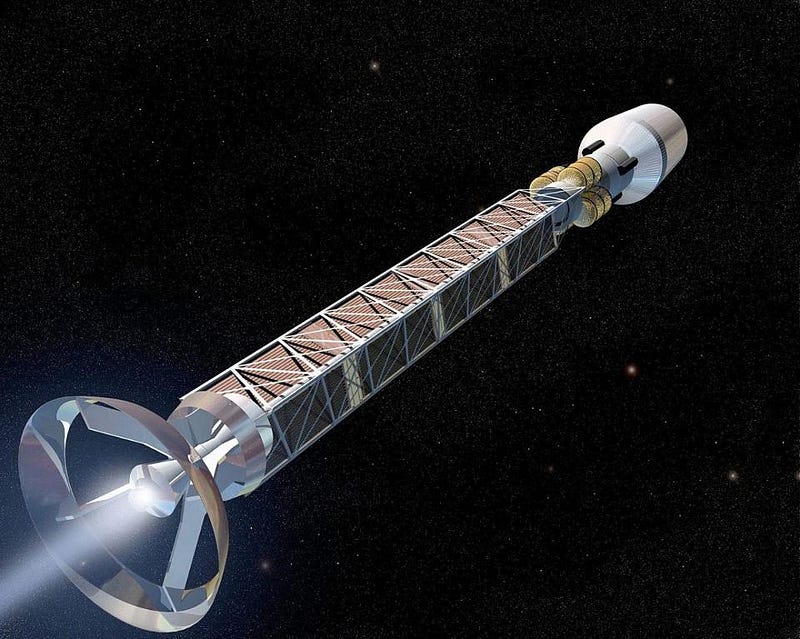
The results of the EMdrive tests are still inconclusive. There are many potential sources of error and the measurements themselves indicate a large uncertainty in how much thrust is produced. It’s unclear whether there really is a reactionless thrust, or whether there is a reaction that we haven’t measured.

And the dark matter explanation is highly speculative, requiring many unknowns to have a very particular outcome to account for such an effect. But if the EMdrive really works, a recoil with dark matter is a possible culprit. If it turns out to be the case, the dark matter mystery will be solved once and for all by the most unlikely of candidates: an inventor tinkering with a seemingly impossible engine, only to be vindicated by the missing mass of the Universe.
This post first appeared at Forbes, and is brought to you ad-free by our Patreon supporters. Comment on our forum, & buy our first book: Beyond The Galaxy!





